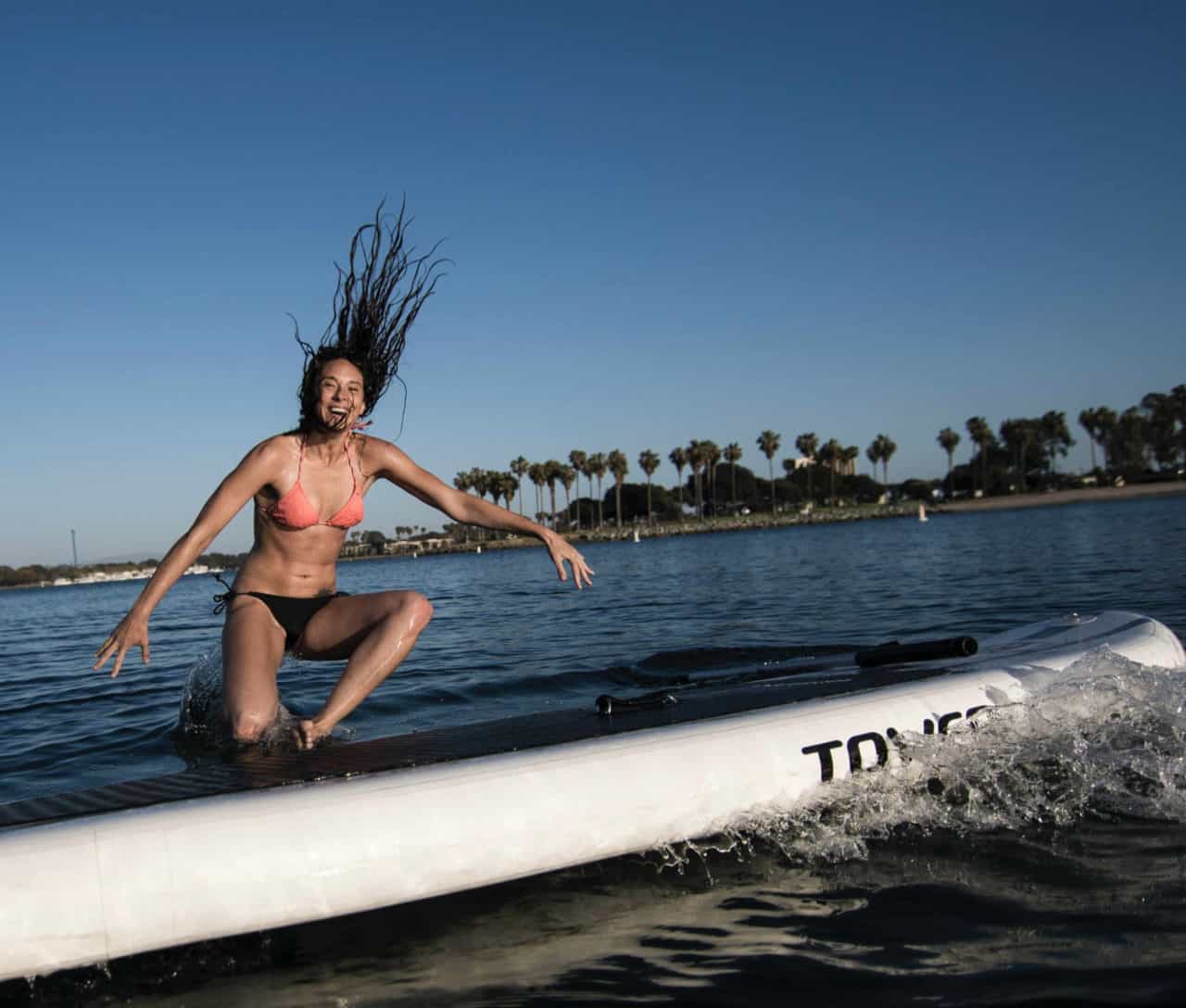
Stand up paddling: The summer sport of the year
It’s official: Stand Up Paddleboarding (SUP) is no longer a secret. You’ve probably already noticed people moving smoothly over lakes, canals and bays on a surfboard, one oar in hand, not unlike a Venetian gondolier.
Now that we’re spending our holidays at home, there’s no better time to take up a local activity that combines fitness, fun and relaxation.
Find about our favourite holiday sports on your doorstep here.

Severine Scala is owner and a trainer at StandUpClub Berlin. She shares her tips and advice on how to get started on your SUP journey and which boards are perfect for beginners.
It’s simple: just stand up, push off and paddle!
To become a stand up paddler, all you need is the courage to stand on the board with a paddle in your hand and start paddling. “Basically SUP as a popular sport is easy to learn,” says Severine. The worst that could happen? You might fall into the water!
The technique of stand-up paddling is child’s play. Simply place your feet hip-width apart at the height of the handle, bend your legs slightly, push off and paddle. If you don’t want to fall into the water right away, you can also start on your knees à la Pocahontas.
Glide over to sea, river or ocean
Search Google to find your nearest lake, river or bay, and off you go! “Unlike a kayak or canoe, you perceive nature in a completely different way on a Stand Up Board,” says Severine. “You can’t help but feel free in the fresh air and by the water! For nature-loving people who like to be active, SUP is an ideal sport to clear your head.”
Socially distanced so it’s suitable for corona
If you stand on a three meter long board and paddle across the water, you don’t run the risk of getting close to others. This makes SUPs the perfect sports equipment for the Corona summer.
“If you are already on holiday at home, then you should enjoy the summer with family and friends and use it to get to know your city better from the board,” recommends Severine.
SUP is a holistic workout
Because stand up paddling is so enjoyable, you might not even realise it’s a super effective whole body workout. “Due to constant balancing, SUP activates the whole body and is easy on the joints. In order to be able to move on the board, the whole body must be under tension. The upper body muscles, stomach and back are strengthened! Balancing gives your legs and bottom an extra portion of training,” explains Severine.
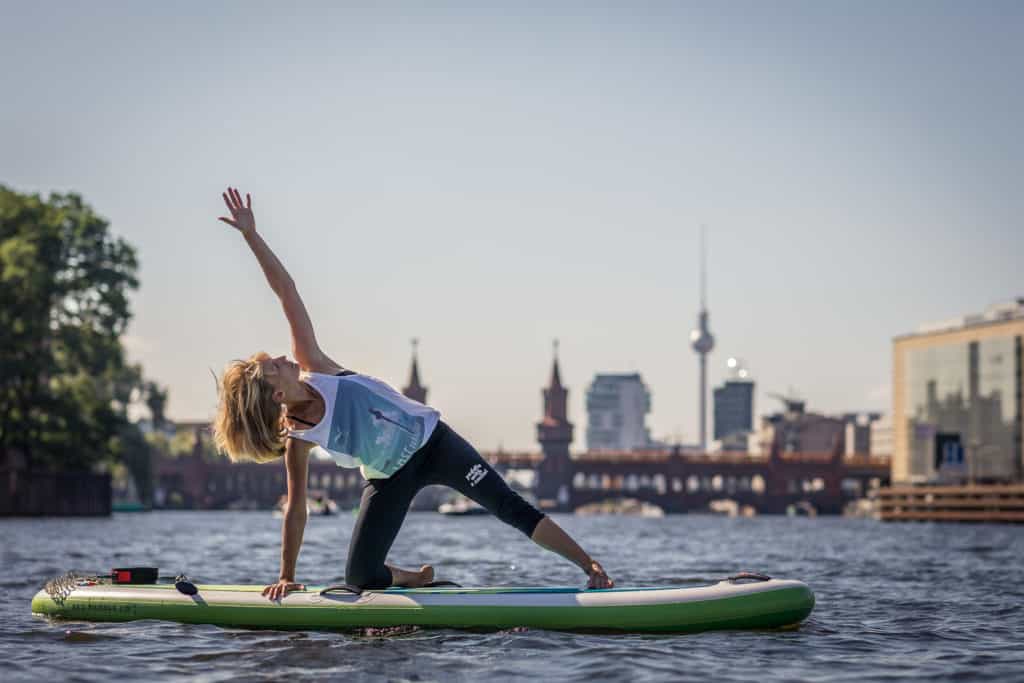
SUP is good for the head
Leave the daily work routine behind when relaxing on the lake. The silence, the far-sightedness and the immensely calming, stress-free atmosphere provide mental relaxation. “Out of the everyday life – into the pleasure!”
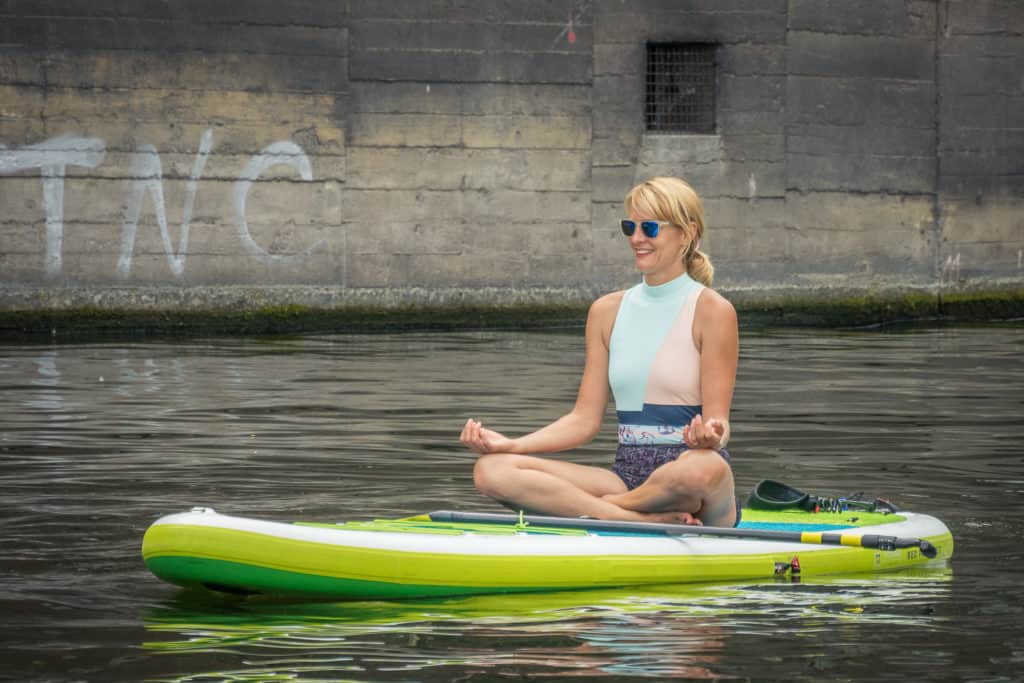
Which SUP board is best for beginners?
As with all other sports, there is a huge selection of accessories for stand up paddling. Good equipment is crucial so you don’t lose the desire to do it. Severine says: ”A board must have a good water position and must not adjust in the heat! When you are alone on the water, you want to know that you have something safe under your feet.”
So what do you have to consider when buying your first board?
You can choose from hardboards or inflatable boards. An inflatable board is softer and lies higher above the water; a hardboard, on the other hand, means you can work with your own body weight.
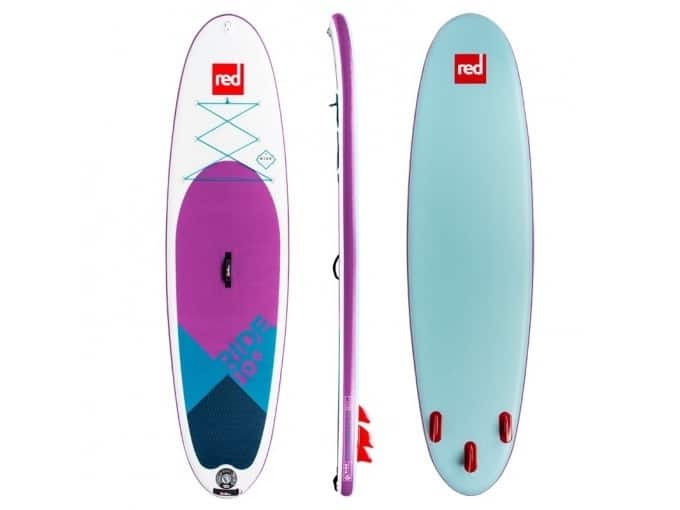
hardboard ©StandUpClub Berlin 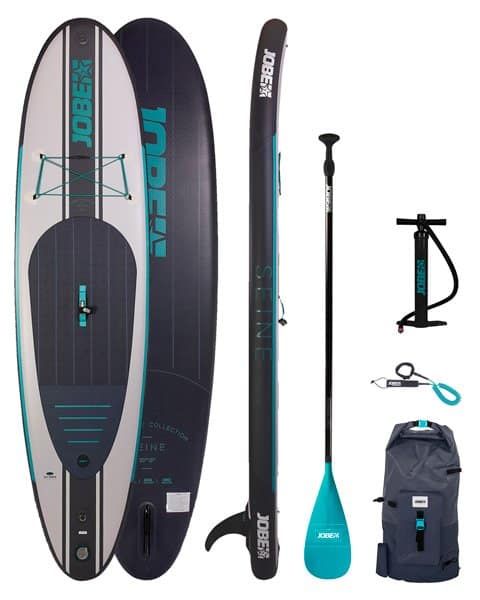
inflatable board @Stehpaddler Berlin
If you are new to standing on a paddle or surfboard, you should choose one that’s at least three meters (ten feet) or longer, whether inflatable or hardboard. The width of the board determines the stability. That’s why beginners are recommended to choose a slightly larger board, between 80 and 86cm in width.
With beginner boards the focus is on stability so even inexperienced riders can get paddling right away. “It’s obvious when a board has poor stability,” says Severine. “The board hangs loose and the SUPers stand low in the middle. The front and back point upwards like a banana.”
SUPers who don’t inflate their board properly will not feel stable. You’ll start spinning around your own axis and won’t get off the ground at all!
For those who have little storage space and hardly any transport possibilities, Severine recommends an inflatable SUP. These Inflatables are easy to transport and can be stored comfortably at home. Just remember, don’t leave them in the blazing sun unnecessarily, because that way the air can escape.
If you want to paddle in a more professional capacity, Severine recommends a hardboard. With these you can build up a higher speed.
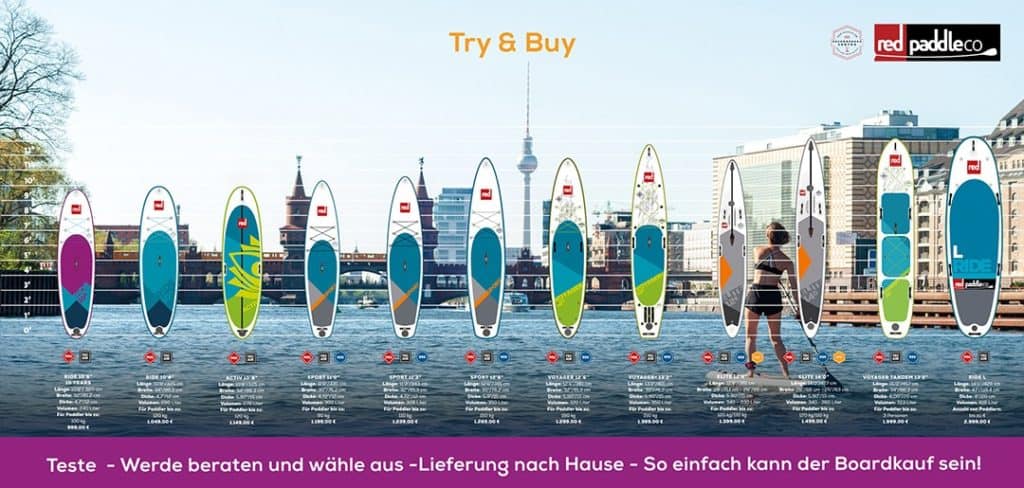
Before buying your own SUP, you should ask yourself what purpose and also what requirements the board should fulfil. You can buy a SUP board in sports shops, DIY stores, coffee shops and sometimes even at discounters. They’ll include a paddle and pump but they aren’t cheap, coming in at 300euros or more. So try and get advice before you buy!
Or better still, try the board before you buy. “You will notice very quickly – depending on your weight and the centre of gravity of your body – which board suits you best,” says Severine.
Read about a stand up paddle session here.
Want to try it out? Then take a look at our website or our app where you’ll find a huge range of SUP partners in your area.



Comments